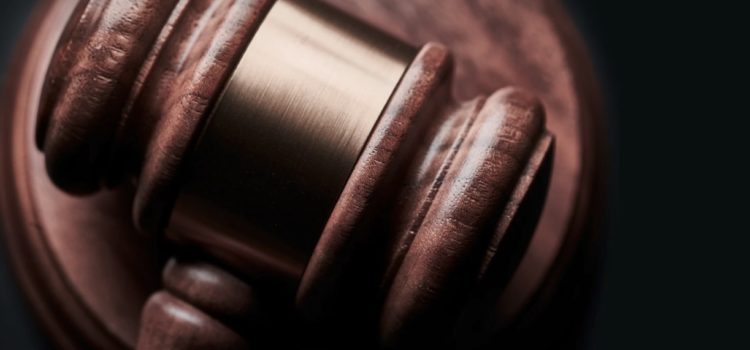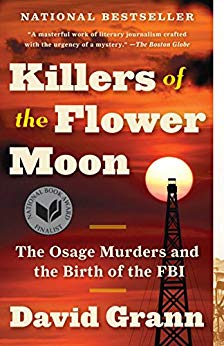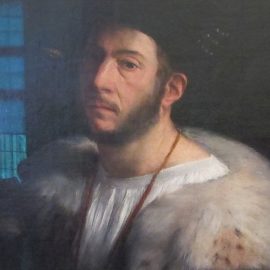

This article is an excerpt from the Shortform summary of "Killers of the Flower Moon" by David Grann. Shortform has the world's best summaries of books you should be reading.
Like this article? Sign up for a free trial here .
What’s witness tampering? How was this tactic used during the Osage murder trials?
Witness tampering is an attempt to prevent or influence a witness’s testimony. Often, the goal is to keep the witness from telling the truth, therefore influencing the outcome of the case.
Keep reading to learn how witness tampering factored in the Osage murder trials.
Witness Tampering in the Osage Murder Trials
The trial of William Hale offers several witness tampering examples. Through a local attorney, Tom arranged a meeting with the stickup man Dick Gregg, known as a member of the fearsome Al Spencer gang. At that time, Gregg was serving a sentence in a Kansas penitentiary for armed robbery. Gregg agreed to meet with Tom White and share what he knew, in exchange for a possible sentence reduction.
At his meeting with Tom White, Gregg revealed that Hale had paid the Spencer gang $2,000 to murder Bill and Rita Smith. Gregg claimed that he had refused this assignment, deeming the contract killing of a woman to be dishonorable, even by outlaw standards. He also mentioned the name of another associate, Curley Johnson, who had knowledge of the Smith slayings. But Johnson, Tom learned, had died—apparently of alcohol poisoning, though it was quite possible he had been another victim of the Reign of Terror. Another potential witness, the bootlegger Henry Grammer, with whom Hale had been overheard talking about the conspiracy, had died in a car accident in June 1923. For White, this seemed like a clear instance of witness tampering.
Through another informant, Tom discovered that an outlaw named Asa Kirby had been responsible for rigging the charges that killed Bill and Rita. But Kirby was also unable to testify. Two weeks after Grammer’s death, he had been killed by a store owner during an attempted burglary. It came as no surprise to Tom to learn who had tipped off the store owner about the break-in—William Hale.
The conspiracy was eating its own in a serious case of witness interference. It was clear that Hale was systematically killing anyone who had been involved in the Osage murders and might be able to implicate him.
Trial and Trickery
With Burkhart and Ramsey’s confessions in the books, Tom decided that it was time to talk to Hale. And while White’s agents couldn’t conclusively link Hale to all 24 Osage murders from 1921-1926, they could at least prove that he had benefited financially from many of them, including that of George Bigheart. But the calm and confident Hale was entirely unperturbed by the mounting evidence against him and refused to yield anything to the investigators. He simply told them that he was prepared to have his day in court and fight the charges.
But this was a tall order. In addition to the witness interference, the Oklahoma state judicial system was wracked with corruption, with judges and prosecutors widely known to take bribes from wealthy defendants. A man like William Hale would easily be able to manipulate the system. White understood that his case was dead if he had to take it to state court. His only chance of securing a conviction was to take the case to federal court.
But because most of the surface land allotted to the Osage had already been sold to whites (the Osage retained the oil and minerals underneath), most of these murders had thus taken place on land that was under Oklahoma’s jurisdiction. There was one exception, however: the murder of Henry Roan, whose body had been discovered on Osage-controlled territory, and, theoretically, eligible for federal prosecution. This was the case they decided to bring Hale up on. But here, White and his team suffered another setback when a U.S. district court judge ruled, on technical grounds, that the Roan case had to be tried in state court, giving Hale another shot at witness tampering.
Fortunately, White had also worked with the Oklahoma state attorney general to draft murder charges on the Smith bombing for use in state court, in the event that the federal government was found to be lacking jurisdiction. Hale and Ramsey were immediately re-arrested and put on trial for the murder of Bill and Rita Smith. Still, the trial would now be held in Hale’s domain of Osage County, presenting the prosecution with a steep uphill battle. The government assembled an all-star legal team for the prosecution, while Hale hired his own team of high-powered attorneys, which he was confident would help him defeat the charges.
Ernest Burkhart’s Trial
During the trial, Hale’s team lied and blatantly tampered with the witness Ernest Burkhart and attempted to intimidate him into silence. Shockingly, the judge allowed all of this to happen in open court. On one occasion, Hale openly berated Burkhart personally, in full view of the judge and jury. Tom White was outraged and appalled by the utter brazenness and arrogance of Hale’s conduct, already on top of his many witness tampering examples.
Now, under the pressure of Hale’s backroom scheming, Ernest recanted his testimony, claiming that he knew nothing about the murders and taking the stand as a witness for the defense instead of the prosecution. Outrageously, he claimed that Tom White’s agents had only obtained his confession through torture—a lie that was echoed by Hale and Ramsey. White’s one-time star witness was being used against him. So, White got Kelsie Morrison to confess, and act as a witness against Burkhart and Hale.
Ernest Burkhart could now see the tide turning in the case. On June 9, 1926, he notified the prosecutors that he wished to change his plea again, this time to “guilty.” He read a statement before the judge and jury that he had, in fact, hired Kirby to blow up Rita and Bill Smith’s house and admitted that his story about torture at the hands of federal agents was a fabrication.
Accordingly, Ernest Burkhart was sentenced on June 21, 1926, to life imprisonment.
William Hale’s Trial
On July 29, 1926, Hale was put on trial for aiding and abetting the murder of Henry Roan, while Ramsey was charged with the killing itself. As the trial unfolded, the jury learned that the pair had originally plotted to kill Roan through the slow administration of poisoned moonshine—confirming to the Osage community that many of the slow, wasting deaths of their friends and family (likely including Mollie’s mother, Lizzie, and her other sister, Minnie) had actually been deliberate poisonings.
The prosecutor showcased to the jury the orgy of murder and mayhem that Hale had orchestrated for over five years. He said that Hale had turned the slaughter of wealthy Osage tribe members into a profitable business, turning men, women, and children into the prey of whites. But to the dismay of the prosecution and Tom White, and thanks in part to witness interference, the jury was unable to reach a unanimous verdict—the hung jury was the product of Hale’s campaign of bribery, intimidation, and tampering.
The case against Hale and Ramsey would have to be retried. This time, Bureau agents would safeguard the jury, hoping to minimize the possibility of Hale corrupting or intimidating them. During this second trial, Hale’s attorneys called Mollie to the stand and forced her to admit that she had once been married, albeit briefly, to Roan. They implied that Mollie’s now-incarcerated husband, Ernest Burkhart, had killed Roan out of jealousy and that the murder had had nothing to do with Hale.
But this time, the tricks and lies did not work. On October 29, 1926, both Hale and Ramsey were found guilty of first-degree murder and sentenced to life imprisonment. Neither man made any statement upon the conviction and sentencing. The next year, Morrison was convicted of Anna’s murder, although Bryan Burkhart was ultimately given immunity by the prosecution.
William Hale tried multiple methods of corruption, including witness tampering. Despite his backroom dealings and witness tampering examples, William Hale was convicted and sentenced to life imprisonment.

———End of Preview———
Like what you just read? Read the rest of the world's best summary of David Grann's "Killers of the Flower Moon" at Shortform .
Here's what you'll find in our full Killers of the Flower Moon summary :
- How the Osage tribe had vast oil wealth, but had it seized by their murderous neighbors
- The brutal and unresolved murders of Osage Native Americans
- The complicated history of the FBI in profiting from the Osage murders






